Trimming a Process from 2 Weeks to 2 Days
Summary
Building trust to co-create a solution.
I leaned on my seven years of experience in a large global corporate environment to build trust with the client as somebody who understood the complexities of their organization and could guide them on a path to the answers they needed.
I was the lead researcher on a consulting team comprised of a UX Architect, a Business Strategist, and a UX Designer. We worked closely with a cross-functional client team to uncover internal obstacles, identify the potential value of an improved process, and co-create solutions.
4
Workshops
20
User Interviews
100+
Pages of documentation
1
Future State Process
The Problem
We don’t know what we don’t know.
The client - a major global financial services organization - had an overly complex and time-consuming process for existing business customers to add new accounts.
It was so complex that the company didn’t have a holistic view of the process across its internal departments, much less the user journey of its customers.
“I don’t know anyone that could tell you why one request is routed for review and another isn’t.”
The Solution
Co-create a shared vision for the future.
The client was not in a position to make immediate changes.
They first needed to give executive leaders a holistic view of the current state, the pain points in the process, its real impact on business outcomes, and what a future state could achieve.
In short, they needed a vision for the future.
Working on-site with the client’s cross-functional team to map out the current process.
The Process
We led the client through a five-stage Design Thinking process that encompassed seven different engagements over a six-month period.
Stage 1: Discovery
I helped our team facilitate a two-day Success Workshop that brought together key client stakeholders across departments to clarify and define the problem and map the current process.
From the Design Thinking activities we facilitated, we crafted and delivered a carefully notated Current State Service Blueprint complete with estimates of the emotional impact on users (gray peaks and valleys in the image to the right below).
This was the first time the client had ever seen a full view of their own process from beginning to end.
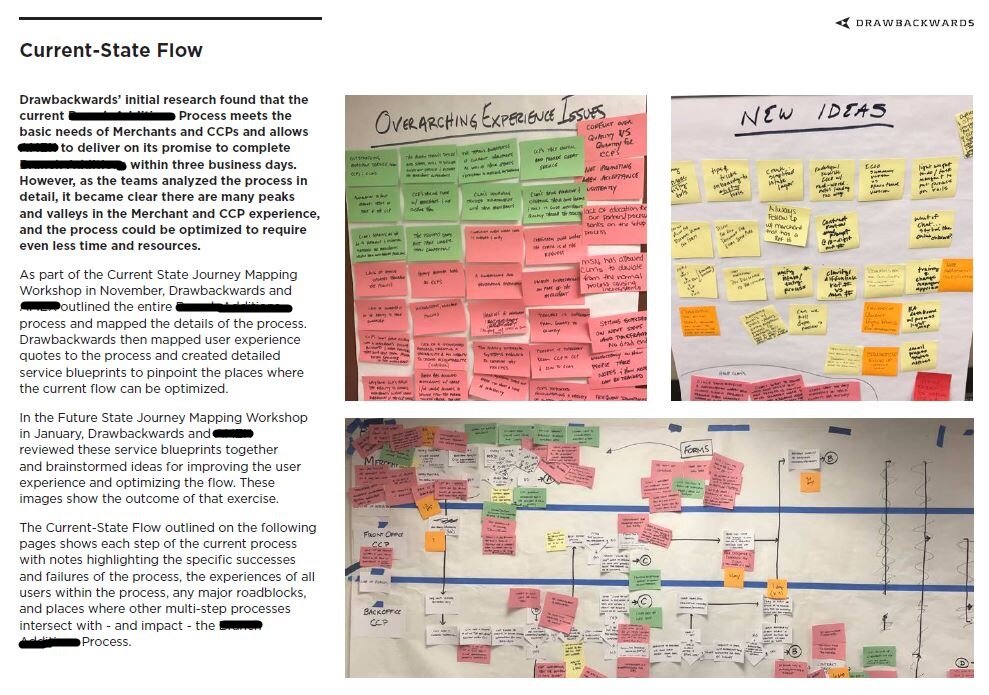
We mapped out the current state side-by-side with the client...

...and delivered their first comprehensive view of the entire process.
Stage 2: Research
As the lead UX Researcher on the project, I designed a research plan to test our assumptions from the workshop and give us a 360-degree view of the primary strengths, challenges, and pain points that a Future State process would need to solve.
I tag-teamed with another researcher to interview customers and internal employees and conduct “ride-alongs” to observe customer service calls in action.
“I’d like to provide white-glove service but I feel like my hands are tied and I have no insight into what is being done by the other teams.”
Stage 3: Define
With our research insights in hand, we facilitated a second workshop to update our service blueprints and show for each step of the process who participated and how it impacted the customer experience.
Stage 4: Ideate
The goal of our third workshop was to turn the best ideas of how to improve the current state into a map of an ideal Future State to provide the best possible user experience.
We focused on the biggest pain points and identified ways to address them. The result was detailed service blueprints of what a Future State could look like.
Our third workshop filtered down to our best ideas to create a viable Future State service blueprint.
Our second workshop mapped what we found in the research.
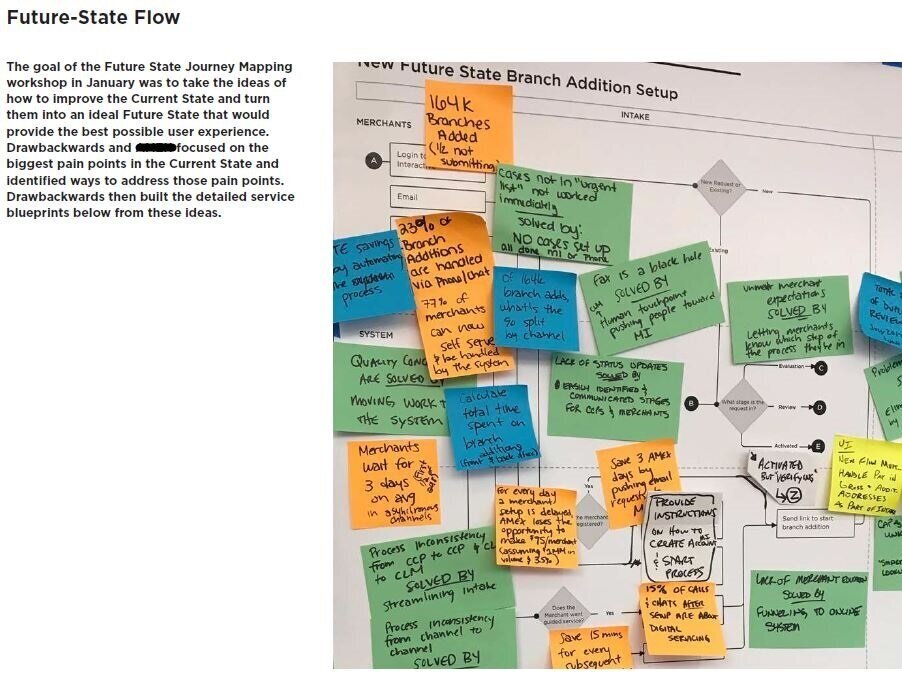
In our final document we took the notes from our workshop...
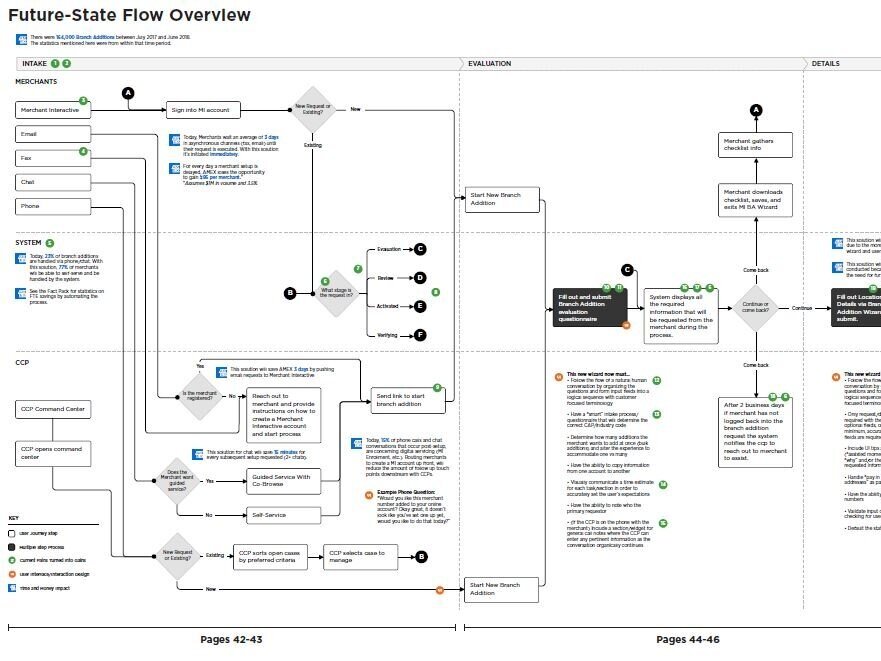
...and turned them into a final Future State service blueprint.
Stage 5: Roadmap
In our final engagement, we worked with the client team to prioritize the projects required to create the Future State solution and compile those projects and initiatives into several potential plans of action.
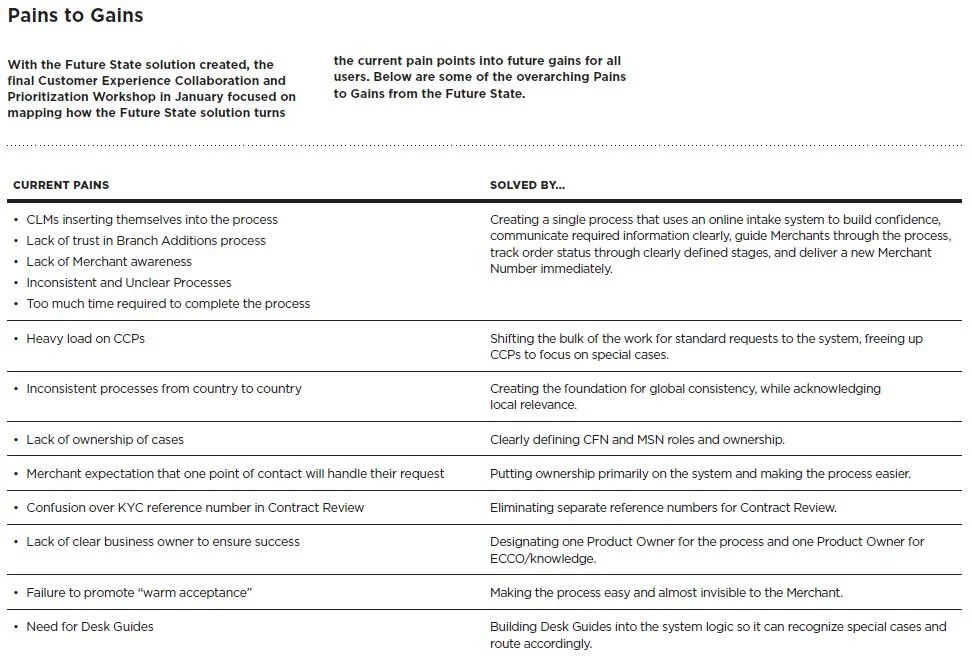
We identified how the current pains would be addressed by the Future State process.
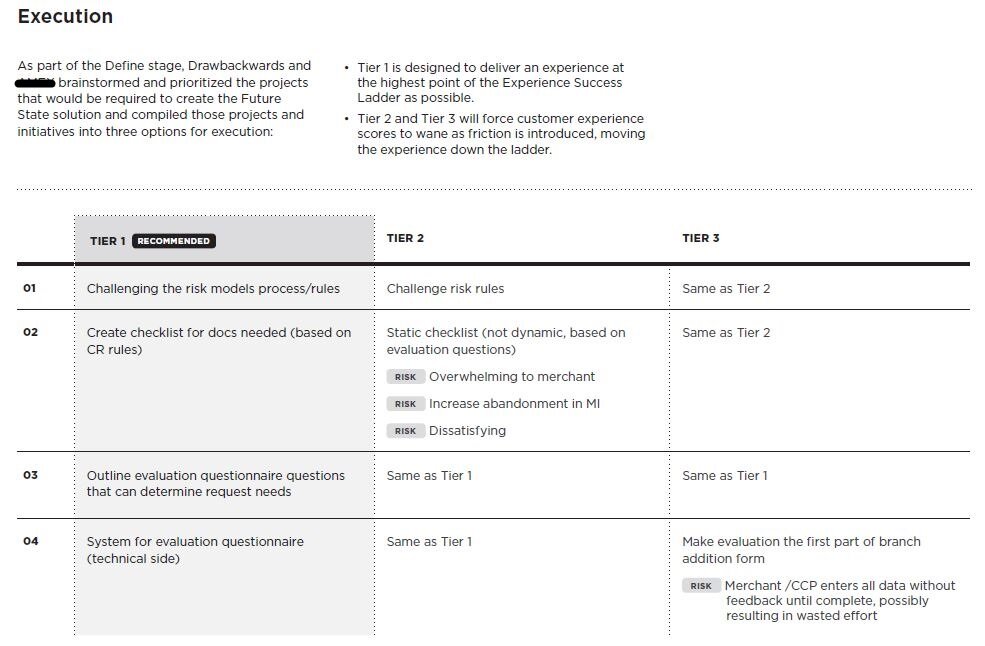
Working with the client team, we laid out three options for executive leadership to choose from to execute a plan forward.
The Results
An improved business process.
Our combined team estimated that, if the major initiatives were implemented, the process could take as little as two days instead of the two weeks (or more) that it was often taking.
“We’ve never had the level of end-to-end visibility, a true holistic view of all areas of the process and the users involved as we had with your documentation.”


